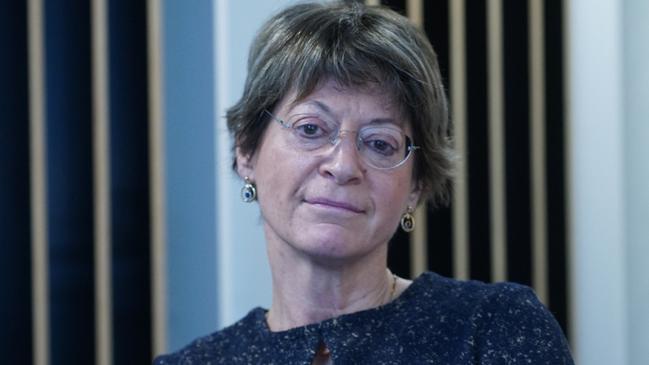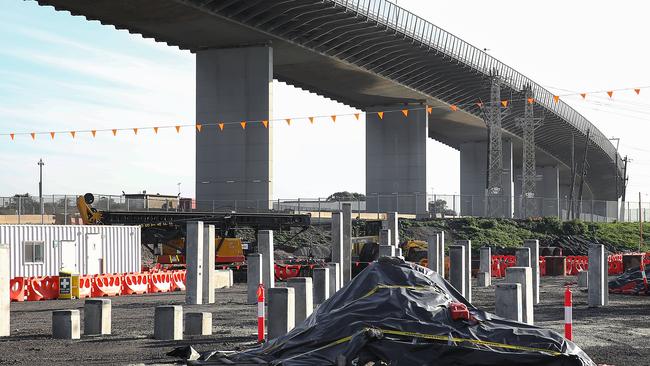EPA pressured to solve toxic soil saga, Ombudsman finds
A long-running probe into the West Gate Tunnel soil saga has found errors in how the environmental watchdog approved three landfill sites for the toxic soil.
Victoria
Don't miss out on the headlines from Victoria. Followed categories will be added to My News.
Victoria’s independent environmental watchdog was pressured to help the Andrews government solve the West Gate Tunnel’s toxic soil saga, a damming Ombudsman report has found.
The investigation also found Environment Protection Authority Victoria did not properly consult with communities while assessing applications for three separate landfills to handle soil contaminated with PFAS.
One worker said it was an “outrageous situation” that the EPA had been burdened with the government’s contract problem while consultation was described as “waste of time”.
Victorian Ombudsman Deborah Glass on Tuesday released the findings of a long-running investigation into the toxic soil saga which plagued the West Gate Tunnel.
It focused on the way the EPA approved three landfill sites to receive PFAS-contaminated dirt under special regulations.
Community groups protested against the soil coming to their areas and the agency was forced to cancel its approvals and redo them after an error was found in the way it provided “conditional approval” for the sites.
In her report, Ms Glass said there was “little doubt” the independent agency was under pressure from the state government and other groups after the tunnel saga had become a serious political problem.
A working group set up to find a solution, which included departmental and West Gate Tunnel Project staff, also put pressure on the body.

“On the evidence reviewed, the EPA was pressured to find a solution to assist the government in responding to potential legal challenges from Transurban and the John Holland Consortium,” the report said.
“This was done to avoid the practical problems and political fallout of disposing the spoil in municipal landfills.”
The report also said that the pressure to “fix” the issues between the state government and the builders on the West Gate Tunnel had flowed into the decision-making process for new regulations handling the toxic soil.
“It is likely this pressure contributed to the legal errors made by the EPA when making the 2020 Environmental Management Plan decisions,” it said.
In one email from April 2020, an EPA staffer said they wanted to handle the laws a different way but was “facing pressure from the Minister’s Office’
“It is vital that the EPA must not only be independent but be seen to be independent to maintain public confidence in the objectivity of its decisions,” Ms Glass said.
A former executive director interviewed by the Ombudsman said the EPA was always under pressure to hurry up or make problems go away.
“Whether that’s from the Minister’s Office or whether that’s from proponents, or whether that’s from community groups or, or whatever it might be,” he said.
“At no point have I been asked to do something at the Minister’s behest … they always respect the independent role. It doesn’t mean the pressure doesn’t exist.”
The senior staffer also said they were frustrated that it had fallen to the agency to find a solution.
“It frankly really annoys me that it does fall to (the EPA), and I think it’s outrageous that we can get to a point where a proponent, for the first time in Victorian history at least, says, ‘I want three sites with full environmental and planning approvals’, on the basis they might pick one of those sites or none of those sites.
“I thought it was an outrageous situation driven by the contractual arrangement, rather than an environmental arrangement.”

Ms Glass also found the EPA should have consulted more with the local communities around these landfill sites.
There was a clear difference between how the agency viewed the issue of toxic soil compared to worried members of the community.
“Ultimately, we concluded that the EPA did its job according to the science,” the report said.
“It assessed the danger was likely to be low, but adopted a cautious approach to the management of the spoil, requiring all landfill operators to safely contain PFAS at ten times the amount likely to be present in the spoil.
“But it plainly failed to convince the community of this.
This led to a “yawning gulf” between what the EPA was doing and what the community expected.
“This failure to provide appropriate information and opportunities for communities to participate when making its approval decisions for sites to receive the spoil for the project was unreasonable,” Ms Glass said.
“It also gave no specific consideration to human rights, even though human rights were very much a focus for affected communities, who were worried about the impact of PFAS on themselves and their children, as well as waterways and wildlife.”
“The EPA told us consulting the community would be a waste of time – in effect, they thought there was no point in consulting because they knew what the community thought. But the lack of meaningful engagement caused unnecessary social, psychological and financial stress to the impacted communities, who felt left in the dark.”

The report also questioned whether the EPA could have spent more money engaging with these communities.
“We were told the EPA ‘did not have the resources’ to turn around the negative public perception of PFAS. Yet it spent ‘hundreds of thousands of dollars’ on legal advice,” it said.
Opposition transport infrastructure spokesman Matt Bach accused the Andrews government of playing political games to cover up issues on major projects.
The opposition claims senior roles in the EPA were filled with former Labor government staffers in 2020 while the saga was unfolding.
“Instead of listening to local communities, Daniel Andrews wrote this own rules and stacked the EPA with political advisers to allow him to dump dangerous soil in Melbourne’s west,” Mr Bach said.
“Melbourne’s west deserves better than an arrogant government that views it as nothing more than a toxic dumping ground.”
“Independent environmental watchdogs are not Daniel Andrews’ political plaything.”.




